Dream about the Vanished Jerusalem
by Grigory Kanovich
translated from Russian by Yisrael Elliot Cohen
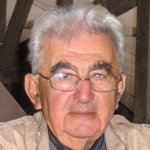
It seems that I dreamed about it when I was still in the cradle, long before I first saw it for real. Long before 1945, when it took me into its bleeding embraces that still reeked of the smoldering embers of war. Long before one could see there a burial hillock whose mud besmirched all my joys and forever stained, with a poison-yellow tint, all of my sorrows, because it was there that my mother (may her memory be blessed) found peace or perhaps did not find it.
In the course of my now already hardly short life, I have visited many cities — New York and Paris, London and Geneva, Toronto and Berlin, Turin, Prague and Warsaw. But not one of those majestic, inimitable, attractive cities ever entered my dreams.
I only dreamed about a single city in the whole world.
Week of Names Events to Commemorate Holocaust This Year
In the run-up to the Day of Remembrance of the Lithuanian Jewish Victims of Genocide, organizers of the civic initiative NAMES invite you to remember and honor the victims of the Holocaust. Now for the seventh year, the reading of the names of those murdered will include different groups and occupy an entire week.
The series of events will begin in Merkinė. On September 17 residents will read out loud the names of members of the community murdered more than 70 years ago, commemorating the tragedy which took place in the town.
On September 20 the reading of the names will take place at two locations in Vilnius: outside the former ghetto library (Žemaitijos street no. 4) and at the “memory stone” commemorating Fania and Lazar Lewando, founders and owners of a vegetarian restaurant (Vokiečių street no. 14).
On September 23 the names will be read out in Kaunas.
On September 24 residents of Lithuania are invited to visit Jewish mass murder sites located nearest to them.
“The Holocaust is one of the most painful topics in the history of Lithuania. Only by remembering and talking about the unpleasant past can we open up to the world. I think these readings are a strong and personal expression of this kind of remembrance and freedom,” NAMES coordinator Milda Jakulytė-Vasil says.
The list of initiatives isn’t final: all who want to may contribute by selecting an important location for Holocaust commemoration. The names and surnames of those murdered can be found in museums, libraries and institutions concerned with the preservation of Jewish heritage. More information about the readings and how to organize them yourself can be found here.
The period of one week isn’t coincidental; over this week several important Jewish religious and cultural holidays take place. Rosh Hashanah takes place on September 21 and 22 this year. This is, the Jewish New Year, a time for reflection. The Lithuanian Day for the Remembrance of Lithuanian Jewish Victims of Genocide falls on the Sabbath this year; according to Jewish custom it is forbidden to visit graves on this day.
Lithuanian Day for the Remembrance of Lithuanian Jewish Victims of Genocide is marked on September 23. This was the day in 1943 when the Vilnius ghetto was liquidated.
Rosh Hashana Greetings from LJC Chairwoman Faina Kukliansky
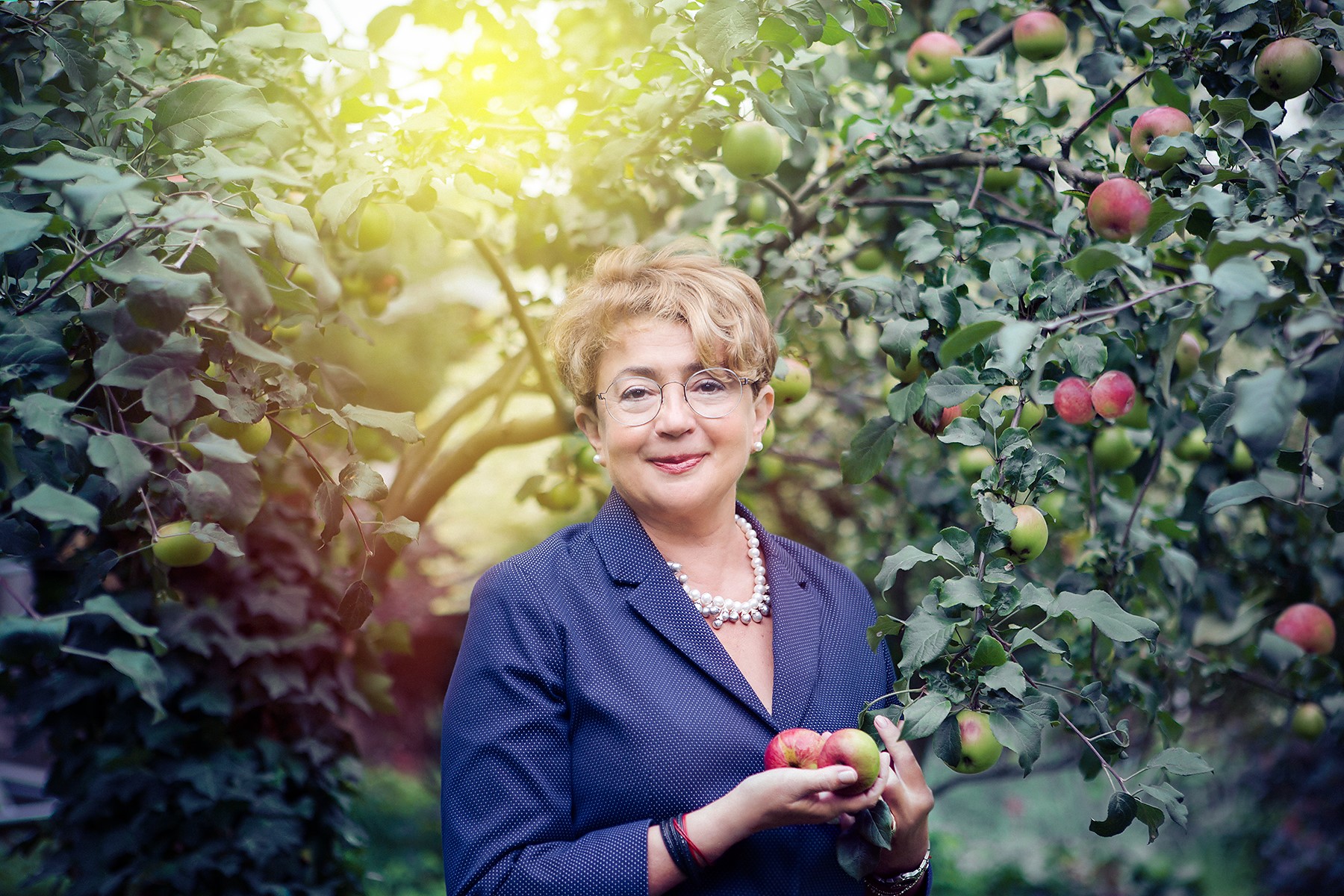
Dear members of the Lithuanian Jewish Community,
I wish you a sweet 5778! I greet you wish you as much peace, goodness and calm as possible in your families and in the community, and to enter the New Year with a smile. The most important thing is that there be the least amount of anger possible, and that our health and moods might be better. May concord, understanding and a good communal feeling lead you.
Come Celebrate Rosh Hashana at the Choral Synagogue
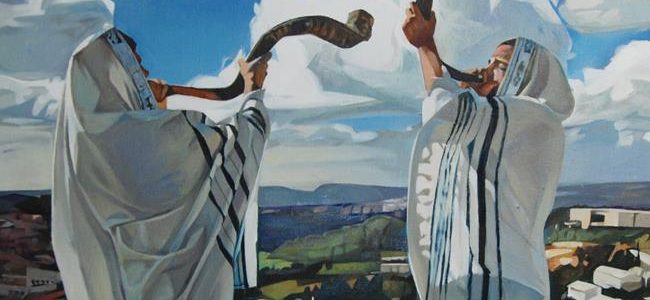
Wednesday, September 20
Traditional Rosh Hashana celebration from 5:00 P.M., religious service starts at 6:30. Presentation of calendar for 5778 and traditional Rosh Hashana treats.
On September 21 and 22 services begin at 9:30 A.M.
Educational Rosh Hashana Evening

This evening we will not only have fun, try food and look at the new Jewish calendar for 5778, we’ll also renew our knowledge of this sweetest of Jewish holidays. Be there, 6:00 P.M., Tuesday, September 19, on the third floor of the Lithuanian Jewish Community.
AICE Update: Rosh HaShanah Fundraiser
The Jewish Virtual Library is the go-to source my students use for fact-based research pertaining to Judaism, Israel and the Holocaust.
We hear this all the time from teachers because the American-Israeli Cooperative Enterprise (AICE) is at the forefront of online Jewish/Israel education. We have worked hard to build the Jewish Virtual Library to include nearly 25,000 entries covering everything from anti-Semitism to Zionism. We are also proud to have reached more than 30 million visitors from more than 200 countries in the last three years.
In January, we gave the JVL a new look. We’ve made it easier to navigate and to find the information you need. We’ve also optimized the library so it is compatible with your smartphone and tablet. We have much more planned, including an App and material packaged for high school educators.
We need your help!
Happy (Jewish) New Year: L’Shana Tova U’Metuka
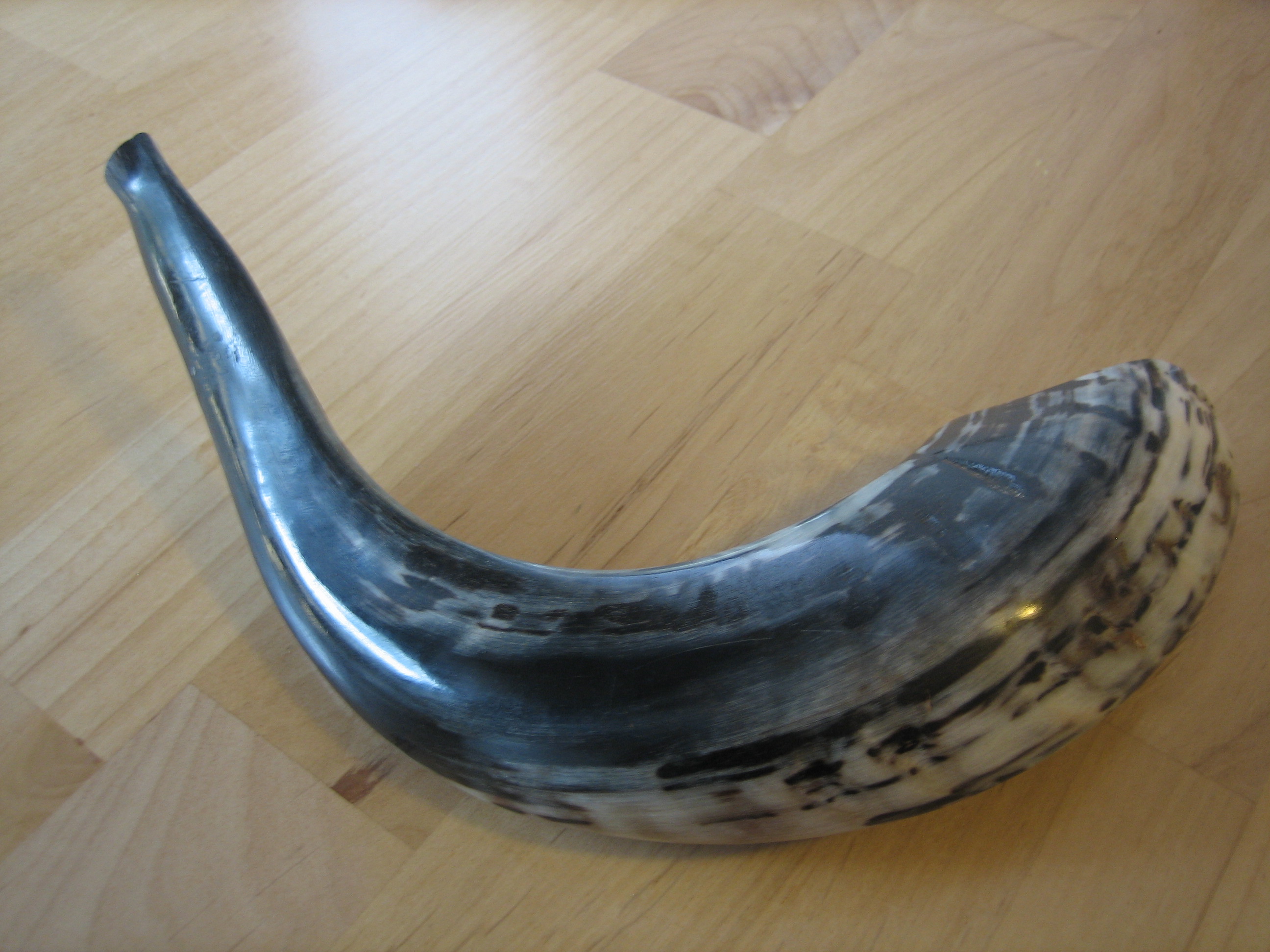
by Barb @ 1 Sentence Diary
The photo above is my shofar, an instrument made out of a ram’s horn, which is a traditional part of the Rosh HaShanah ceremony. Personally, I am unable to make any sound come out of the shofar, but both of my kids are quite adept at it. Don’t ask me how they learned it–I have no idea!
Today is the Jewish holiday of Rosh HaShanah, which is the Jewish New Year. According to Jewish tradition, Rosh HaShanah is the anniversary of the creation of the world. In Hebrew, we say L’shana Tova U’metuka (שנה טובה ומתוקה), meaning, for a sweet new year.
As the New Year, Rosh HaShana is a celebratory holiday, but there are deeper meanings as well.
The New Year for Globalists and Nationalists

Dear friends,
Georg Friedrich Hegel was to modern thought what Plato was to Greek philosophy. Most of the ideological movements of the 19th and 20th century see themselves as his heirs: from Marxists to nationalists and from existentialists to psychoanalysts, they all imbibed Hegel’s philosophy and methodology, especially the “dialectic”: thesis, antithesis, synthesis.
But we Jews were, as usual, a thorn in Hegel’s side.
Hegel developed, among many other things, a neat model of the life cycle of peoples. A group–say, the ancient Greeks–will develop its particular spirit (volkgeist) until they make their unique contribution to the universal spirit (weltgeist). Then they will fall into decadence, fade into history, and disappear. Jews, mused Hegel, had made their unique contribution, monotheism, but they stubbornly refuse to disappear.
LJC EVENTS CALENDAR SEPTEMBER 19-27, 2017

September 19, 6:00 P.M., Jascha Heifetz Hall, LJC, Pylimo street no. 4, Vilnius. Educational Rosh Hashanah evening. Besides having a good time, sampling foods and seeing the new calendar for 5778, we’ll also renew our knowledge of this sweetest of Jewish holidays.
September 20, 5:00 P.M. Traditional Rosh Hashanah celebration at the Choral Synagogue. Service begins at 6:30 P.M., with services on September 21 and 22 at 9:30 A.M.
September 22, 5:00 P.M. Art & Weisen concert in Heifetz Hall, LJC. The German quartet will perform subtle and enchanting interpretations of Eastern European and klezmer tunes.
Important note to members and visitors: on September 21 and 22 the Community administration and Social Programs Department will be on holiday.
September 24, 12 noon, Choral Synagogue. St. Christopher chamber orchestra concert “From a Forgotten Book.” For an invitation, call (8 5) 2613 003 or 867881514
September 24, 2:00 P.M. Rosh Hashanah for kids and young people at the Community.
September 25, 8:30 A.M. International conference “Diaspora and Heritage: The Shtetl,” building III, Lithuanian parliament. Registration required and identification required for entry. Registration open till September 21. Conference program here.
“Diaspora and Heritage: The Shtetl,” an International Conference at the Lithuanian Parliament September 25
An international conference called Diaspora and Heritage: The Shtetl will be held at the Lithuanian parliament September 25 dedicated to the Day of Remembrance of the Genocide of the Jews of Lithuania and the European Day of Jewish Culture.
Representatives of the Lithuanian and foreign Jewish community, scholars and heritage protection experts will give presentations and discuss Litvak history, memory and heritage. Conference participants and guests will have the opportunity to view a new exhibit financed by the Lithuanian Foreign Ministry called “One Century from Seven: Lithuania, Lite, Lita,” which will later travel to Lithuanian embassies. The new Lithuanian Jewish Community calendar for the year 5778 will also be presented. This year’s calendar features the wooden synagogues of Lithuania.
The Lithuanian Jewish Community and the Cultural Heritage Department under the Lithuanian Ministry of Culture are organizing the conference. The event is jointly financed by the Goodwill Foundation and the Cultural Heritage Department.
You are invited to attend. Please find the program for the conference and register at the following internet address:
https://www.lzb.lt/registracija-i-zydu-paveldo-konferencija/
Program in English also available here.
Volunteers Clean Up Sudervės Road Jewish Cemetery in Vilnius
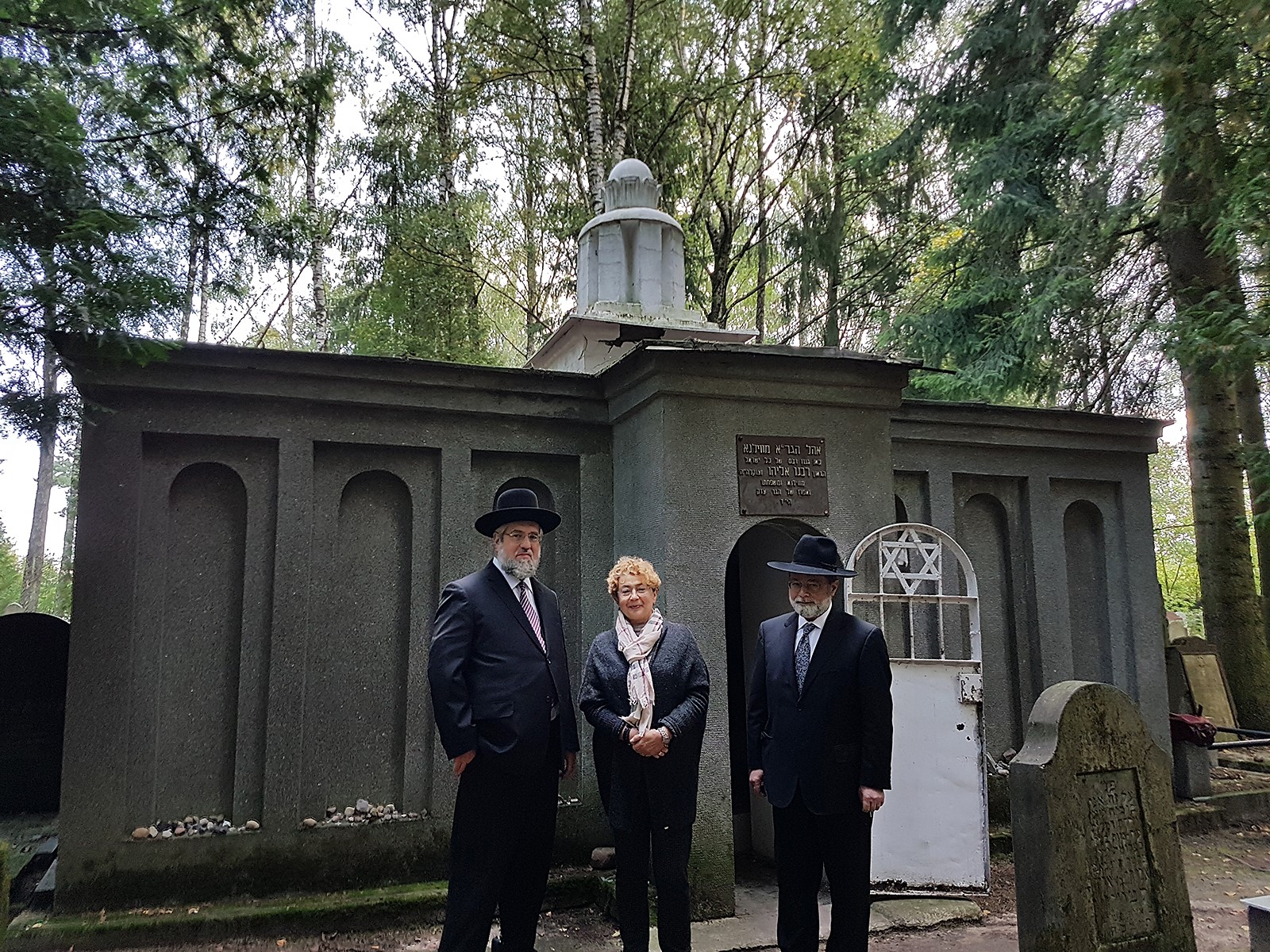
Lithuanian Jewish Community members and staff gathered to clean up the Jewish cemetery on Sudervės road in Vilnius on Sunday, September 10.
Israeli ambassador Amir Maimon pitched in, as did LJC chairwoman Faina Kukliansky with her grandchildren. Community members, administrative staff and rabbis all came out to perform a small mitzvah in the run-up to Rosh Hashanah and Yom Kippur. They raked up leaves, gathered garbage and sorted it for recycling, tended abandoned graves and cleaned and beautified the only working Jewish cemetery in Vilnius.
Thank you to all the volunteers for your good work!
Volunteer Clean-Up at Jewish Cemetery, 10:30 A.M., Sunday, September 10
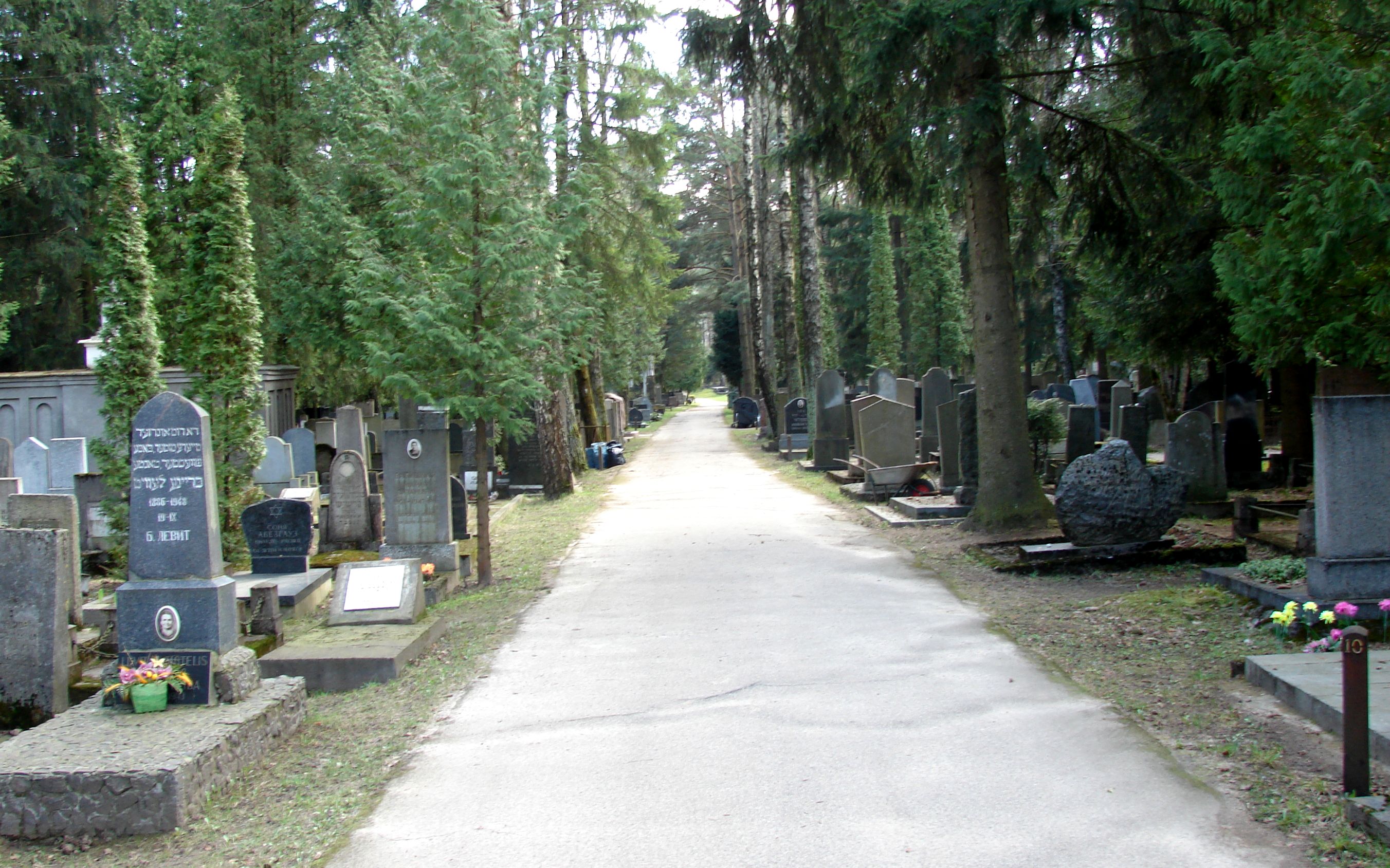
Dear members, staff and friends,
Please join us this Sunday morning for a clean-up of the Jewish cemetery at Sudervės road no. 28, Vilnius, beginning at 10:30 A.M. Thank you!
Great Synagogue Listed on Cultural Treasures Registry
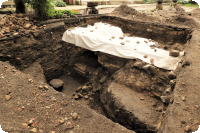
information from the Cultural Heritage Department under the Ministry of Culture of the Republic of Lithuania and other sources
A commission for assessing cultural heritage real estate from the Cultural Heritage Department has provided legal protection to the remains of the Great Synagogue in Vilnius. The Great Synagogue of Vilnius was one of the largest religious institutions in Eastern Europe. It was renowned as an important Jewish spiritual and educational center and put Vilnius on the map as a center of Jewish scholarship. The Cultural Treasures Registry lists the construction (fragments of brick wall dating from the 18th century and entrance to the synagogue, southwest wall fragment with niche for the aron kodesh and eastern wall fragment), architectural features, remains of the former building complex including mikvehs dating from the late 19th century, a utility trench on Žydų street and cultural strata as valuable and protected features of the synagogue complex.
Originally the site hosted a wooden synagogue, believed to have been built around 1573. It burned down and was replaced at least once. In 1630 and 1633 royal grant was issued to allow a brick and mortar synagogue to be built there.
Monument Commemorates Jewish Community of Žagarė, Lithuania
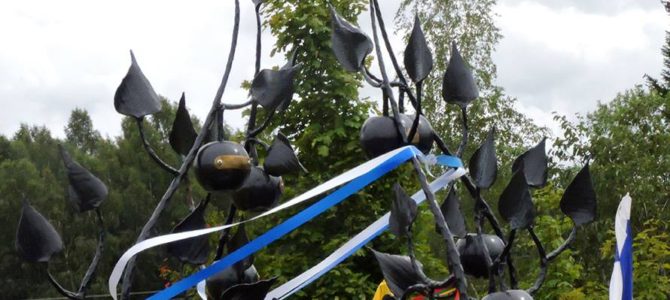
A metal apple tree was “planted” at the Litvak Commemorative Garden in the Žemaitija National Park by the Jakovas Bunka Charity and Sponsorship Fund to commemorate the former Jewish community of Žagarė, Lithuania. The metal sculpture was made by Artūras Platakis. Rabbi Kalev Krelin, Jewish rescuer family member Leonas Levinskas and Israeli ambassador to Lithuania Amir Maimon attended the ceremony in mid-August in Medsėdžiai village near Plungė, Lithuania.
Events for September at the Panevėžys Jewish Community
September 20
Competition “Who? What? Where?” for students at the Panevėžys Jewish Community, Ramygalos street no. 18, Panevėžys. The theme of the contest is Holocaust events in Lithuania. The competition starts at 2:00 P.M. There will be six teams from schools and gymnasia in the area. Each team will have 5 members and 1-2 teachers from each educational institution. In total 35 participants will compete.
September 22
Rosh Hashanah celebration at the Rojaus paukštė café, Respublikos street no. 4a. Starts at 6:00 P.M. Please register by September 12 with Zinaida Zaprudskaja to attend this event.
September 23
Commemoration of Jewish Genocide Day: at 1:00 P.M. there will be a commemoration at the statue of the Jewish mother on Atminites square; at 1:30 P.M. there will be an excursion to the Holocaust mass murder site in the Kurganava forest; at 2:00 P.M. there will be an excursion to the Holocaust mass murder site in the Žalioji forest; at 2:30 P.M. there will be a screening of a documentary film about Auschwitz at the Panevėžys Jewish Community, Ramygalos street no. 18, Panevėžys.
Please register with Zinaida Zaprudskaja by September 12.
A bus will carry visitors to the sites, departing from Atminities square at 1:30 P.M.
All events are supported by the Goodwill Foundation.
![]()
Map Reveals Most Racist Countries in EU
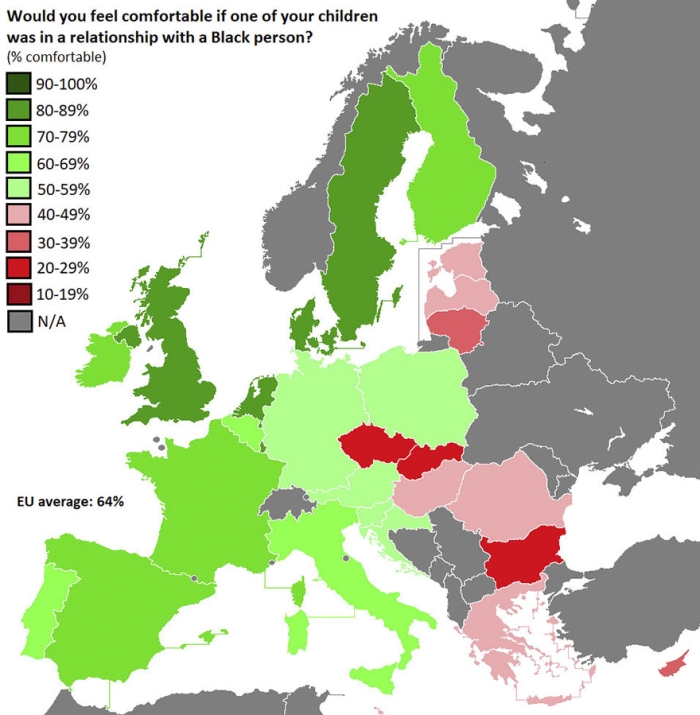
As the European migrant crisis surges on, the attitudes of EU citizens towards ethnic minorities continue to shift and evolve. But just how comfortable would they be with their child pursuing a romantic relationship with someone from a different cultural group?
In 2015 the European Commission asked people from all 28 EU member-states this very question, among others, and compiled the resulting data to produce a surprisingly damning report. On August 12th, 2017, a Reddit user named Bezzleford, well-known for creating statistical (and sometimes humorous) maps, decided to draft up a visual component to the report, and now it’s going viral, attracting over 18 thousand upvotes after it was re-posted by Latvian user blueeyedblonde69.
Lithuanian Jewish Community Chairwoman Faina Kukliansky’s Address to Conference on Commemorating Great Synagogue of Vilnius
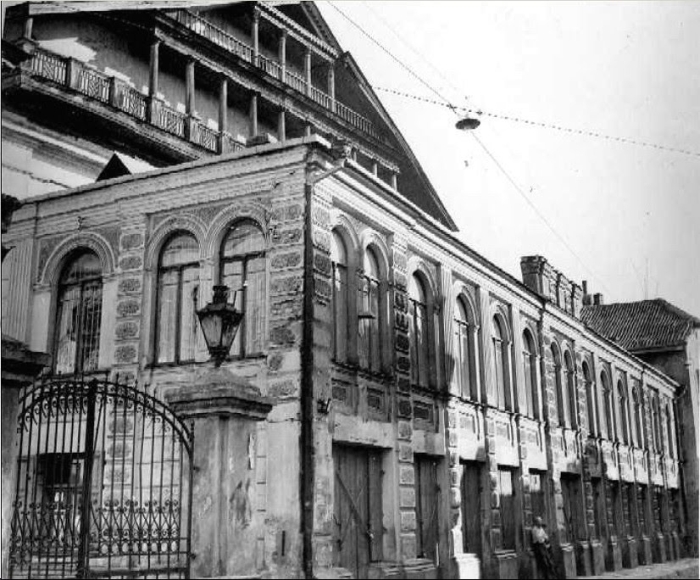
Executive director of the Lithuanian Jewish Community Renaldas Vaisbrodas delivered the following address by chairwoman Faina Kukliansky to a conference called “How Should We Commemorate the Site of the Great Synagogue of VIlnius?” on August 4, 2017:
Dear participants of the international conference How Should We Commemorate the Site of the Great Synagogue of VIlnius?”,
Thank you to the organizers for the opportunity to deliver a keynote speech in the name of the chairwoman of the Lithuanian Jewish Community.
I’d like to use this opportunity to address the conference and ask: who could answer the question posed by this conference better than the Jews of Lithuania? Thanks to the initiative and active efforts of the Lithuanian Jewish Community recently, important Litvak heritage monuments and symbols of culture again enjoy the possibility of being restored in our country, recalling the great past of the Jerusalem of Lithuania and preserving it for future generations.
Two Lessons by Rabbi Mordechai Weits
Rabbi Mordechai Weits will hold two lectures at the Choral Synagogue in Vilnius on August 29 and 31.
The first lesson is a discussion of the weekly readings from the Torah. The second lesson is about preparing for the Jewish Holy Days in the fall. The teachings will be held in the classroom on the second floor of the synagogue at 6:00 P.M. on August 29 and 31, respectively.
UPDATE: A third lesson by the rabbi, a discussion of weekly Torah readings, will be held at 6:00 P.M. on September 4 as well, at the same location.
Lithuanian Shtetlakh: European Day of Jewish Culture Celebration September 3 at LJC
Press release
The Lithuanian Jewish Community invites the public to attend an event dedicated to the Jewish shtetls of Lithuania to commemorate and remember together this period of Lithuanian history, interesting and dear to us but cut short by the Holocaust and which has become a subject of academic interest and heritage protection.
The theme of this year’s European Day of Jewish Culture on September 3 as confirmed by the Cultural Heritage Department to the Lithuanian Ministry of Culture is “The Diaspora and Heritage: The Shtetl.” This is an intentional, mature and topical choice for a country where the life of the largest ethnic and confessional minority, of the Jews, thrived namely in the Lithuanian shtetlakh until 1941.
The Lithuanian Jewish Community will host an event called “Shtetlakh of Lithuania” on the third floor of the community building at Pylimo street no. 4 on September 3 to celebrate the European Day of Jewish Culture in 2017.
The event will kick off with a bagel breakfast and a presentation and tasting of authentic Jewish recipes at the Bagel Shop Café on the first floor at 9:00 A.M. Following that everyone is invited to attend a short Yiddish language lesson. A brunch awaits the graduates at the Bagel Shop Café. At 2:00 P.M. guest speakers will begin delivering free public lectures on the shtetlakh of Aniksht (Anykščiai), Eishishyok (Eišiškės), Sheduva (Šeduva) and Vilkovishk (Vilkaviškis) and what remains of them. A challa-baking lesson and presentation of the Bagel Shop Café’s new ceramics collection begins at 4:00 P.M. The Jewish song and dance ensemble Fayerlakh will perform a concert at 6:00 P.M.
The Rakija Klezmer Orkestar will also perform a concert at 3:00 P.M. in the Šnipiškės neighborhood of Vilnius.
More information available here.
“The reality in Lithuania is that If you want to learn more about the material and immaterial cultural heritage of a given town in Lithuanian (including the architectural features and aura of buildings, demographic changes and consequent changes in the structure of the town, changes in political structure and the ensuing canonization of ideologized development patterns), you will, unavoidably, run into the word ‘shtetl.’ You will find no better opportunity to understand what this is and to discover the shtetl in the features of buildings still standing in the towns than the events for the European Day of Jewish Culture on September 3,” director of the Cultural Heritage Department Diana Varnaitė said.
The word shtetl is an old Yiddish diminutive for shtot, city, meaning town. The towns of Lithuania where Jews comprised half or the majority of the population, characterized by Litvak energy and the bustle of commercial activity, are often called shtetlakh, the plural of shtetl. It’s thought shtetls evolved into their modern form in the 18th century. Malat, Kupeshok, Zosle, Olkenik, Svintsyan, Vilkomir, Gruzd, Eishyshok, Utyan–these are just a few of the surviving Lithuanian towns.
Lithuanian Jewish Community chairwoman Faina Kukliansky recalls her parents’ shtetl:
“We didn’t travel to my grandparents’ village in the summer. We didn’t have any ebcause they were murdered in the Holocaust, or had moved from their shtetlakh to Vilnius or Kaunas because they could no longer live there without their loved ones and friends lying in the pits together with the bodies and souls of the other unfortunates.
“The Kuklianskys who survived, however, my father, my uncle who hid in trenches from the Nazis near the shtetl of Sventiyansk, were rescued by local village people, but for their entire lives longed for their home on the banks of the Ančia River in Veisiejai, Lithuania. There was no place happier or more beautiful than their native shtetl. Perhaps because their mother hadn’t been murdered yet.
“The eyes of my mother, who was born in Keydan (Kėdainiai) and spent her childhood in Shavl (Šiauliai), her eyes used to just shine when she remembered how they used to go to the ‘spa town’ of Pagelava near Shavl in horse-drawn cart.
“The shtetls… are no more. Now there are cities and towns, but they have no rabbis, no yeshivas, synagogues or Jews… all that remains is love for the place of one’s birth, but love is stronger than hate. The memories remain, too, and without them we wouldn’t be commemorating the shtetls and their inhabitants.”
Those who seek to find the traces of the lost and concealed presence of the Jews only have to find their way to the center of a Lithuanian town, to the old town, where the red-brick buildings still stand. All of the old towns of the small towns were built by Jews. The same goes for the former synagogues, schools, pharmacies and hospitals.
Cultural heritage experts tell us market day and the Sabbath were the main events of the week in the Lithuanian towns. Both were observed. After the Holocaust the shtetlakh were empty, the Jewish homes stood empty even if they still contained family heirlooms and the items acquired over lifetimes. Non-Jewish neighbors often moved into these houses and took over the property. Now no one uses the word štetlas in Lithuanian, it sounds exotic and needs to be translated to miestelis.

